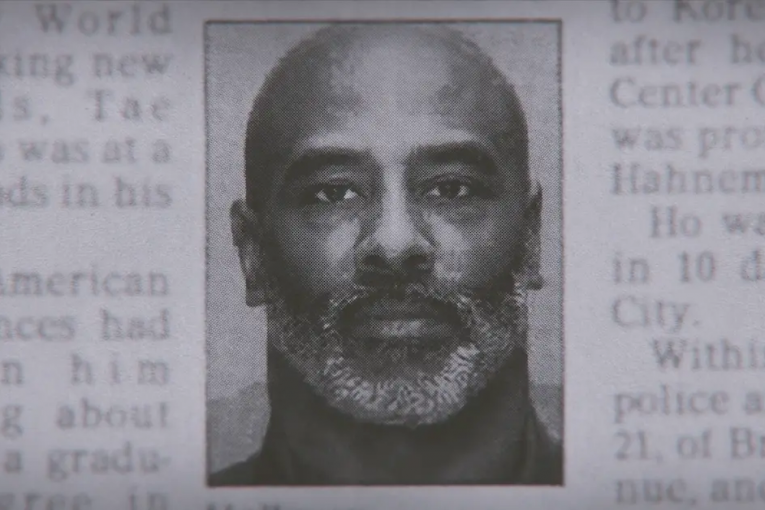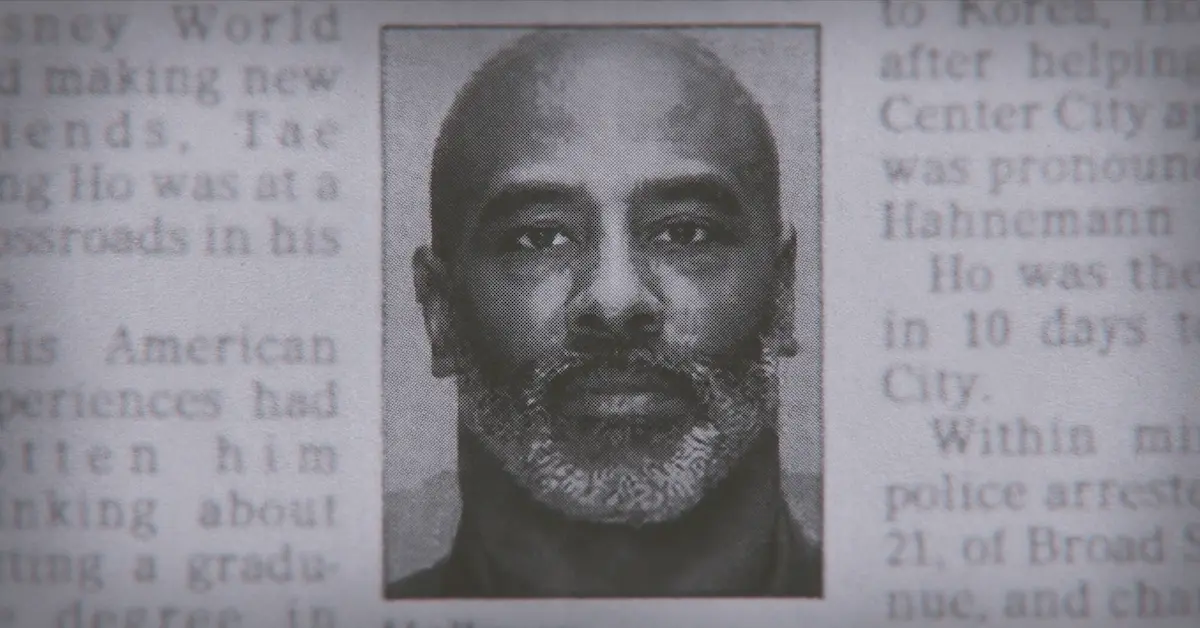

By Nancy Martinez
The final segment of Netflix’s The Innocence Files spotlights yet another major cause of wrongful convictions—prosecutorial misconduct—by following the stories of three exonerated men.
The lives of Chester Hollman, III, Dewayne Brown, and Kenneth Wyniemko drastically changed when the criminal justice system allowed the misconduct of prosecutorial officials that led to their wrongful convictions.
Episode 7
The Prosecution: Wrong Place, Wrong Time
Episodes seven, eight, and nine of Netflix’s The Innocence Files attempt to uncover the true consequences of prosecutorial misconduct on the lives of wrongfully convicted individuals
As the seventh episode of the series opens, Defense Attorney Alan Tauber and the Philadelphia Innocence Project are working alongside Patricia Cummings from Philadelphia’s Larry Krasner District Attorney’s Office to re-investigate the case of Chester Hollman, III.
Chester Hollman, III, was serving a life sentence without parole for the robbery and homicide of a college student, Tae-Jung Ho, in August of 1991.
Witnesses of the crime scene described the suspect as carrying a gun, wearing red shorts, and getting into a white Chevy Blazer along with three other individuals. A cab that followed the suspect’s vehicle was able to get a partial license plate tag, YZA-. As the cab lost the suspect’s vehicle, police began following a different Chevy Blazer that had partially matching car plates.
vehicle was able to get a partial license plate tag, YZA-. As the cab lost the suspect’s vehicle, police began following a different Chevy Blazer that had partially matching car plates.
Chester Hollman, III, was pulled over as the driver of a white Chevy Blazer and immediately arrested for the homicide. However, witnesses were not able to identify Hollman as being the suspect nor were there any guns found inside the vehicle he was driving.
Witness testimony proved to be the most incriminated piece of evidence investigators had.
Deirdre Jones, the passenger of the vehicle Hollman was driving and an alleged co-conspirator of the murder, was questioned by investigators and gave testimony where she accused Hollman of being the shooter.
Another witness, Andre Dawkins, had been down to the street of where the murder had taken place and also provided testimony that pointed toward Hollman being the shooter.
Patricia Cummings began her investigation of the murder by calculating the time that it would take for a vehicle that was followed by the cab to reach the place where Hollman and Jones were pulled over by the police. In order to fit the timing facts of the case, it should have taken approximately four minutes. During their recreation of the scene, it took over eight minutes to complete the routes Hollman was suspected of taking. This inconsistency was one of the many Cummings’ investigations began to uncover.
Cummings also discovered that the prosecutor, Roger King, had coerced both Deirdre Jones and Andre Dawkins into providing false witness testimonies.
Andre Dawkins’ rap sheet was used against him to scare him into providing testimony that would allow investigators to successfully charge Hollman. Roger King had undisclosed criminal files belonging to Dawkins that could have deemed him as an unreliable witness but, instead, King used Dawkins’ false testimony against Hollman.
Innocence Project volunteer, Celeste Trusty, found that Deirde Jones was threatened by Detective David Baker.
Jones later testified that David Baker had threatened her with jail time and refused to let her talk to a lawyer. Baker created her testimony and made her sign it. Due to this truth-sworn testimony, she was called by Baker to the witness stand during trial to testify against Hollman.
In 2011, Deirdre Jones recanted her testimony but Hollman’s appeal was denied when the judge found Deirdre’s recantation to be false.
Reporters Emilie Lounsberry and Michaelle Bond of the Philadelphia Inquirer interviewed Andre Dawkins and Deirdre Jones who both recanted their testimonies. Their story regarding the innocence of Chester Hollman, III, shed light onto Hollman’s case.
While doing further research into Hollman’s case, Celeste Trusty found an additional individual who had rented a white Chevy Blazer with similar car plates as Hollman’s in the same time frame of the incident.
To everyone’s surprise, this individual, Denise Combs, had actually been investigated by the police following an anonymous tip that suggested Denise Combs was involved in the murder. Furthermore,  the police had an incriminating tip which provided evidence that Denise Combs possessed a white Chevy Blazer at the time of the murder.
the police had an incriminating tip which provided evidence that Denise Combs possessed a white Chevy Blazer at the time of the murder.
Andre Dawkins had in fact initially identified her from a picture lineup as possibly being the driver of the car. Yet, investigators resisted to pursue these leads any further as they already had their suspects and stories lined up.
This information regarding Denise Combs was withheld from Gerald Stein, Hollman’s trial attorney. This information could have proven to be time saving to Chester Hollman, III.
Other cases of prosecutorial misconduct by Roger King were uncovered by the investigation of the Innocence Project. There has been at least one other case tried by Roger King that resulted in the wrongful conviction of a man during the same time as Hollman’s conviction.
On June 25, 2019, Patricia Cummings and Alan Tuber presented their case contesting Hollman’s conviction to a Judge Bright.
On July 15, 2019, Judge Bright ordered Chester Hollman, III, to be released from prison as he was “likely innocent” of the murder of Tae-Jung Ho.
Chester Hollman’s case outlines prosecutorial misconduct as being one of the leading causes of wrongful convictions as police investigators and prosecutors “arrest, convict, move on to the next” with no regard for the accuracy of their investigations.
Episode 8
The Prosecution: Hidden Alibi
Episode eight joins the journey of a man wrongfully on death row for the murder of Houston Police Officer Charles Clark.
Alfred Dewayne Brown was charged with the capital murder of Houston Police Office Charles Clark, convicted and put on death row where he remained for 10 years.
On April 3, 2003, a robbery at an ACE check-cashing store resulted in the death of Houston Police Officer Charles Dewayne and cashier Alfredia Jones.
Two men who were associated with Dewayne were associated with the homicides and Dewayne became the third suspect and alleged shooter of Officer Clark after the two men incriminated Dewayne.
Dewayne and his mother were on their way to the police department to confront the accusations when they were pulled over by police and Dewayne was arrested.
During questioning, the other two suspects, Dashon Glaspie and Elijah Joubert, gave testimony that Dewayne was the shooter of Officer Clark while they accused each other of the shooting of Alfredia Jones.
Despite no forensic evidence, on April 3, 2003, Dewayne was charged and faced the death penalty.
The gun that was used in the shooting of Officer Clark was never found. Meanwhile, the gun that was used in the shooting of Alfredia belonged to Joubert; however, he made a deal with the prosecution and testified against Glaspie and Dewayne.
Glaspie further testified against Dewayne after receiving the blame for the murder of Alfredia. According to an interview with Glaspie for the Netflix documentary, the prosecution needed Glaspie to testify against Dewayne to be able to successfully charge him.
Besides Glaspie, Dewayne’s ex-girlfriend, Ericka Dockery-Lockett, became one of the strongest witnesses against Dewayne. On the morning of the robbery, Ericka and her cousin had been Dewayne’s alibi as Dewayne was home with Ericka’s cousin during the incident and had spoken on the landline phone with Ericka right after the news of the robbery had surfaced. Ericka initially submitted her statement in support for Dewayne’s alibi to the police department. However, during the trial, Ericka testified against him.
A grand jury prior to the jury trial was led by a police officer, who with the support of prosecutor Dan Rizzo, coerced Ericka into changing her story. After adjusting her story not quite enough to the “likings” of the grand jury, Ericka was arrested for three counts of perjury and faced a prison sentence of 30 years.
Dan Rizzo successfully scared Ericka into lying in her testimony and Dewayne was found guilty of capital murder.
During an emotional interview with Dewayne, he speaks of the derogatory strip searches he endured for 10 years — an often overlooked detail that can follow wrongfully convicted individuals years after their exonerations.
During Dewayne’s time on death row, his post-conviction attorney Brian Stolarz worked with Joubert and Ericka on written affidavits that would exempt Dewayne from any cooperation in the robbery.
In addition to the affidavits, Stolarz believed the phone records of the landline phone call between Ericka and Dawayne would be key to proving Dewayne’s innocence. Breck McDaniel, police officer, had attained phone record data during the investigation. However, no records of the landline phone calls were to be found during Stolarz’s investigation.
In 2013, Breck McDaniel found a box of Dewayne’s case in his garage. In this box, the phone records needed were found. These records were not officially filed anywhere, yet the records that were found by McDaniel were copies, not original documents. The original documents were speculated to have been kept by Dan Rizzo.
As a result of withholding exculpatory evidence from the defense, also known as a Brady violation, the District Attorney in 2015 ordered the dismissal of Dewayne’s case and the release of Dewayne Brown from death row.
During a civil lawsuit, emails that proved Rizzo’s knowledge of withheld evidence came to light. On March 1, 2019, Dewayne Brown was found to have actual innocence rather than presumed innocence, adn this would have made him eligible for compensation. Unfortunately, later in 2019, his claim to monetary compensation was denied and his civil rights lawsuit continues.
Dan Rizzo has not been held accountable for his actions in the wrongful conviction of Dewayne Brown.
Episode 9
The Prosecution: The Million Dollar Man
On April 30, 1994, in Macomb County, Michigan, a 28-year old female was violently raped during the early hours of the morning in her own home.
Following a composite sketch of the perpetrator and a tip submitted by Kenneth Wyniemko’s ex-girlfriend, the police brought in Kenneth for an in-person lineup. After reciting vocal phrases, the victim chose Kenneth out of the lineup as being her attacker.
Kenneth was considered to be a strong suspect after the victim revealed that she and her husband had had past confrontations with Kenneth at the bowling alley where he worked.
Kenneth’s ex-girlfriend had filed a tip to the police claiming that Kenneth had been stalking and threatening her following a breakup. The police investigators questioned her and had her describe intimate details about their relationship that they would later connect to details from the assault on April 30.
Jailhouse informant Glen McCormick would later contribute to the incrimination of Kenneth when he testified that Kenneth had confessed to him details of the attack.
In 1993, Kenneth was convicted to a prison term of 40-60 years under Linda Davis’ prosecutorial team despite his blood type having been excluded as the blood type of the semen found at the scene.
Seven years after being convicted, Kim North Shine of the Detroit Free Press wrote an article about Kenneth, claiming his innocence. This article generated attention to Kenneth’s case and the Cooley Innocence Project began getting involved after Kenneth had exhausted his appeals and the state of Michigan enacted a post conviction DNA statute.
The Cooley Innocence Project began doing preliminary investigation into the case and found that the police investigators had the victim create a composite sketch of the perpetrator despite both the victim and the perpetrator being masked during the assault.
In addition, the description the victim had made about the perpetrator did not match Kenneth’s physical description. In fact, during the first lineup procedure, the victim was also unable to select anyone.
Tunnel vision of prosecutor Linda Davis and Detectives Ostin, Ernst, and Marlatt neglected the pursuit of other suspects. Detective Ostin had decided against the DNA testing of underwear found at the scene, claiming that the underwear was irrelevant because the items were not touched by the perpetrator.
Detective Ostin had also not tested a cigarette butt found outside the home after the victim claimed the perpetrator smelled like smoke. According to DA Linda Davis, she was not aware that cigarette butts were able to be tested for DNA and thus she never demanded it to be done.
On Nov. 9, 2002, there was a motion hearing for DNA testing and shortly after, there were DNA results for scrapings under fingernails, semen on stockings, and DNA on the cigarette.
The DNA results excluded Kenneth as being a source of any of the DNA. Kenneth was released from prison on June 17, 2003.
Kenneth was the first to be exonerated under the DNA statute in Michigan, but unfortunately there were no real resources available to exonerees.
Due to the lack of resources for the recently exonerated, civil attorney Thomas Howlett helped Kenneth file a civil lawsuit. As a result of this lawsuit, Kenneth was awarded 3.7 million dollars that could not ever amount to the years Kenneth spent imprisoned for a crime he did not commit.
Evidence was found that Kenneth’s ex-girlfriend may have testified with lies against Kenneth as a result of issues they were having after a breakup. Voicemail recordings of her threatening Kenneth were kept by Detective Ostin but the prosecution neglected ever disclosing this information to a jury or the defense team. The intimate details of their relationship as reported by the ex-girlfriend may have also been a result of suggestive questioning done by the detectives.
Kenneth’s conviction is also predicted to be a result of DA campaign pressures on Linda Davis to publically prosecute all crimes in order to win the public vote.
The jailhouse informant, Glen McCormick, also came forward recanting his testimony by stating that Linda Davis had been involved in the creation of his false testimony. She had threatened him with a habitual offense that would put him in jail for the rest of his life and this scared McCormick into creating a false testimony.
Despite discrepancies found within the official investigation, prosecutorial misconduct was not found to be a factor in Kenneth’s case and neither the prosecution nor the police department have had any repercussions.
In May of 2008, there was a matching hit for the DNA found at the crime scene. The DNA came to be that of Craig Gonser.
These three episodes highlighted a main cause of wrongful convictions and also highlights the main issue that presents itself in decreasing the number of these wrongful convictions. District Attorneys and police officials are hardly ever held responsible for their misconduct during investigations. As stated in episode eight, if these officials are not being held accountable, mistakes will continue to happen and innocent people will end up in prison.
The overall series has done a great job of publicizing the main causes of wrongful convictions: unreliable forensic science, eyewitness testimony, and prosecutorial misconduct. The series has also shed light onto the effects of these issues on real lives, and they attributed more than statistics to eight men. Furthermore, the series depicted real racial problems that are fused into the criminal justice system of the U.S.
To learn more about the work offered by the Innocence Project, visit their website: https://www.innocenceproject.org/
To sign up for our new newsletter – Everyday Injustice – https://tinyurl.com/yyultcf9





